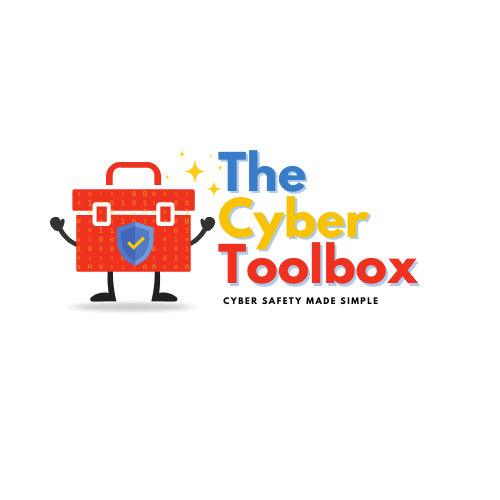For Educators
Welcome to the Educators Hub!
At The Cyber Toolbox, we’re here to support you as you guide students through the digital world. Whether you’re looking to boost your classroom’s cyber safety, address critical issues like cyberbullying, or find engaging activities, this page is your go-to resource.
-
Teach digital responsibility, respect, and positive engagement.
Help your students understand what it means to be a good digital citizen—online manners, understanding your digital footprint, and making ethical choices online.Encourage students to think before they post—remind them the internet never forgets.
Teach respectful communication, even during disagreements online.
Discuss what a digital footprint is and how it affects students’ futures.
Practice identifying credible sources vs. misinformation.
Introduce “pause before sharing”—is it true, helpful, inspiring, necessary, kind?
Set classroom examples by modeling good digital etiquette in your communications.
Create a class contract for responsible internet use.
Integrate digital citizenship into real-life scenarios and “what would you do?” activities.
Highlight positive student examples in class or newsletters.
Remind students that being a good digital citizen also means protecting the privacy of others.
-
Protect students from harm and empower them to speak out.
Cyberbullying can affect academic performance, self-esteem, and mental health.Watch for emotional changes after using devices—mood swings, withdrawal, or anxiety.
Encourage students to talk to an adult if they see or experience bullying.
Make it clear that both online and offline bullying are taken seriously in your class.
Teach the difference between joking and harmful teasing online.
Provide resources for students to report bullying anonymously.
Role-play “upstander” responses with your students.
Reinforce that everyone has a right to feel safe both in person and online.
Share stories of real-life upstanders who made a difference.
Involve parents when appropriate and explain how you’ll support their child.
Make cyberbullying prevention part of your school or classroom rules.
-
Prepare students for safe and smart social networking.
Social media is where many students connect—but it’s also where privacy, security, and reputation risks can start.Remind students to keep accounts private and only accept friends they know in real life.
Teach students how to adjust privacy and security settings on apps.
Discuss the risks of sharing location (geotagging) in posts.
Practice spotting fake profiles or suspicious friend requests.
Encourage students never to share personal info like full name, school, or birthday online.
Talk about digital reputation—what does their online presence say about them?
Teach students the “grandma rule”—if you wouldn’t say or show it to grandma, don’t post it.
Demonstrate how to block or report inappropriate content or harassment.
Discuss scams and how to recognize suspicious links or giveaways.
Warn against meeting someone from social media in person without trusted adult supervision.
-
Create an environment where every student feels confident and supported online.
Set clear, age-appropriate rules for device use in class.
Use a central charging station for transparency around device use.
Incorporate regular check-ins about what students are doing online at school.
Discuss digital safety as part of everyday lessons—not just during “tech week.”
Display posters on digital safety and positive online behavior.
Collaborate with your IT department on updated security settings.
Empower students to share if they see something concerning online.
Provide a process for anonymous reporting of online problems.
Host school-wide assemblies or awareness weeks about cyber safety.
Encourage staff collaboration for consistent technology policies.
-
Extend your teaching beyond the classroom by partnering with families.
Send home parent-friendly cyber safety tips in newsletters.
Host cyber safety nights or parent/guardian workshops.
Suggest families create a home tech agreement together.
Provide conversation starters parents can use at home.
Share recommended resources and guides for parents (free on your site or trusted organizations).
Encourage parents to monitor privacy settings and explain why they matter.
Update families about new apps, trends, and potential risks.
Encourage open communication between school and home about online incidents.
Remind parents to set up parental controls—offer basic how-to guides.
Offer Q&A opportunities for parents to ask about digital wellbeing directly.
-
Ready for full lesson plans, customizable presentations, or classroom activities? Contact us or visit our shop for exclusive educator resources and workshops!
